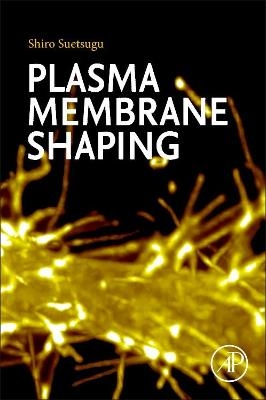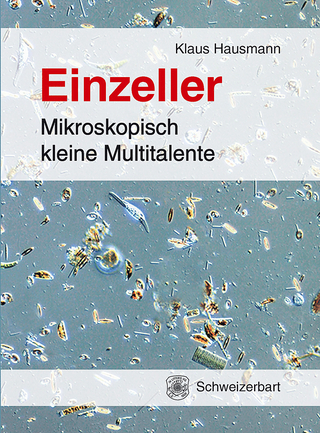
Plasma Membrane Shaping
Academic Press Inc (Verlag)
978-0-323-89911-6 (ISBN)
This is an ideal resource for new researchers coming into this area as well as for graduate students. The methods section will be of interest to both microscopists and computer scientists dedicated to the visualization, data collection, and analysis of plasma membrane shaping experiments.
Dr. Suetsugu is currently Professor at Nara Institute of Science and Technology, Japan. He received his Ph.D and M.Sc in Cell Biology from the Department of Biochemistry and Biophysics, Graduate school of Sciences, The University of Tokyo. His research is focused on the cellular plasma membrane and its essential role of distinguishing the inside and the outside of the cells. He and his team focus on the mechanisms connecting the membrane to the cytoskeleton, and the membrane-binding proteins connecting the membrane to the intracellular and intercellular signaling for varieties of cellular functions including proliferation and morphological changes. They pioneered the membrane shaping protein of the plasma membrane and proposed the mechanisms of the membrane shaping. Notably, they contributed to the mechanisms of the concept of membrane shaping by the proteins having the BAR domains including the I-BAR domain. Throughout his career, Dr. Suetsugu received awards international and national awards such as FEBS Letters Young Group Leader Award, the Young Scientists’ Prize by the Minister of Education, Culture, Sports, Science and Technology, Young Investigator Award, the Japanese Biochemical Society, and the 2015 Kazato Prize.
1. Introduction and overview of the book
Part 1: Building blocks and the shape builders 2. Membrane lipid compositions and the difference between subcellular structures 3. Wiskott4. BAR domains 5. Ankyrin repeat domains with an amphipathic helix for membrane deformation 6. Ankyrin repeat domains 7. Dynamin: molecular scissors for membrane fission 8. Phospholipid signaling, lipase 9. Phospholipid signaling: phosphoinositide kinases and phosphatases 10. Plasma membrane shaping by protein phase separation 11. Synthetic mimics of membrane-active proteins and peptides
Part 2: The functions of the plasma membrane substance and derived vesicles 12. The extracellular vesicles 13. Regulation of membrane traffic through recycling endosomes by membrane phospholipid phosphatidylserine 14. Membrane shaping for clathrin-coated pits and endocytosis 15. Caveolae biogenesis and lipid sorting at the plasma membrane 16. Non-vesicular lipid transport at membrane contact sites between the endoplasmic reticulum and the plasma membrane 17. Lamellipodia and filopodia 18. Membrane structures, dynamics, and shaping in invadopodia and podosomes
Part 3: Force around the plasma membrane and imaging 19. Membrane tension and mechanobiology of cell migration 20. Brownian ratchet force sensor at the contacting point between F-actin barbed end and lamellipodium tip plasma membrane 21. Biophysics of cellular membrane shaping on fiber networks 22. Reconstitution of membrane symmetry breaking
Part 4: The microscopy and image analysis for understanding the shaping of the membrane 23. Imaging three-dimensional dynamics of plasma membrane structures using ultrathin plane illumination microscopy 24. Deep learning for cell shape analysis
Part 5: The essentiality of the membrane shaping by theory and reconstitution 25. Physical principles of cellular membrane shapes 26. Modeling cellular shape changes in the presence of curved membrane proteins and active cytoskeletal forces 27. Molecular dynamics
| Erscheinungsdatum | 02.09.2022 |
|---|---|
| Zusatzinfo | 80 illustrations (30 in full color); Illustrations |
| Verlagsort | Oxford |
| Sprache | englisch |
| Maße | 191 x 235 mm |
| Gewicht | 950 g |
| Themenwelt | Naturwissenschaften ► Biologie ► Zellbiologie |
| ISBN-10 | 0-323-89911-0 / 0323899110 |
| ISBN-13 | 978-0-323-89911-6 / 9780323899116 |
| Zustand | Neuware |
| Haben Sie eine Frage zum Produkt? |
aus dem Bereich


